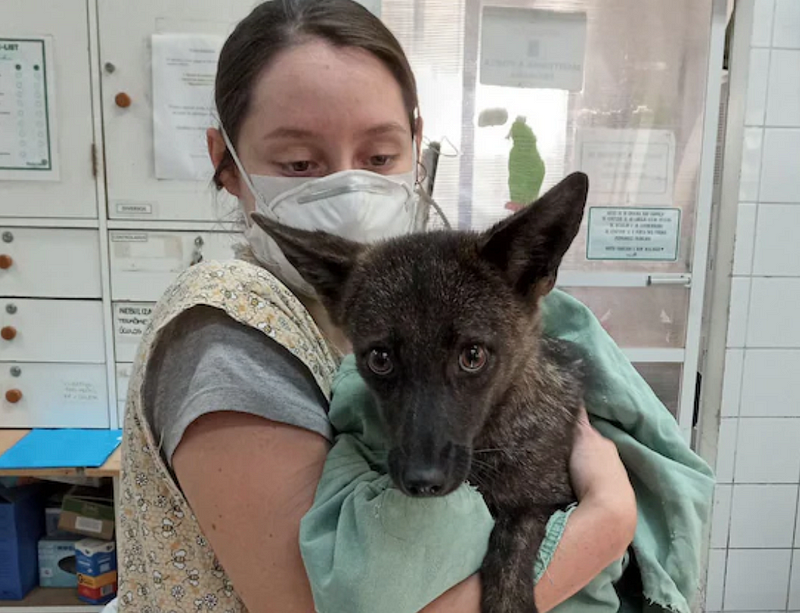# Remarkable Discovery: New Hybrid Animal Emerges in Brazil
Written on
Chapter 1: Nature’s Experimentation
Nature often resembles a whimsical scientist, constantly blending and experimenting through evolution. As species evolve, they adapt over generations, fine-tuning various traits to enhance survival. Among these processes is hybridization, a fascinating aspect of nature's experimentation.
Hybridization occurs when two distinct species mate, resulting in offspring that share genetic traits from both. While most animals tend to mate within their own species, occasional interspecies breeding does occur. The success of this hybridization often hinges on the chromosomal compatibility of the species involved.

Section 1.1: Understanding Animal Hybridization
Hybridization takes place when two species mate and produce offspring with mixed genetics. Generally, animals prefer to mate within their own species, but there are exceptions. The likelihood of producing viable offspring between different species often depends on their chromosomal differences.
Chromosomes, which house DNA, usually create barriers that render species incompatible. However, if species share a close enough genetic relationship, they might successfully hybridize. Research indicates that interbreeding influences around 10% of animals and 25% of plants.
National Geographic clarifies that the closer two species are genetically, the higher the chances of successful hybridization. For instance, dogs and grey wolves diverged only between 11,000 and 35,000 years ago, making wolf-dog hybrids relatively common due to their similar genetics.
Many other hybrids exist in nature; donkeys and horses produce mules, while horses can breed with zebras to create zorses. Even humans have interbred with other human species, such as Neanderthals and Denisovians, as evidenced by the DNA present in modern humans.
Subsection 1.1.1: Benefits and Challenges of Hybridization
When hybridization succeeds, it can lead to offspring that possess advantageous traits, such as improved camouflage. These hybrids may outcompete and even replace their parent species. However, despite their potential advantages, hybrid lineages often struggle to survive due to a critical issue: many hybrids are sterile and cannot reproduce.
Section 1.2: Causes of Hybridization
While animals typically prefer to mate within their species, environmental changes prompt some to adapt by hybridizing. Human encroachment into wildlife habitats forces animals to seek new territories, and experts agree that global warming is a significant driver of hybridization, necessitating adaptation to rapidly changing environments.
Roland Kays, a biologist at North Carolina State University, notes that hybridization often occurs among species that have not been separated for long evolutionary periods. This phenomenon can be observed in coyotes and wolves, especially when one species is prevalent and the other is rare.
Chapter 2: The Discovery of Dogxim
In 2021, a female animal resembling a dog was discovered in southern Brazil after being hit by a car. This unique creature barked like a dog but preferred eating rats and climbing bushes. While it exhibited dog-like features, its pointy ears and climbing habits were reminiscent of a fox.
Veterinarians and caretakers speculated whether the animal might be a hybrid. They reached out to geneticists Thales Renato Ochotorena de Freitas and Rafael Kretschmer to investigate.
The Research
To begin their analysis, Ochotorena de Freitas and Kretschmer examined the number of chromosomes in the animal's cells, discovering a total of 76. This information helped them narrow down potential species, as each species typically has a fixed chromosome count.
The only species within the Canidae family that possesses 76 chromosomes is the maned wolf. However, the researchers dismissed this possibility based on the animal's appearance and behavior. They proceeded to analyze its mitochondrial DNA, which only reflects maternal lineage, identifying its mother as a Pampas fox.
The animal's nuclear DNA provided insights from both parents, revealing the presence of genetic material from both the Pampas fox and a domesticated dog. Domestic dogs have 78 chromosomes, while Pampas foxes have 74. The animal's chromosome count of 76 indicates a potential hybridization between these two species, leading the team to name it "Dogxim"—a blend of "dog" and the Portuguese term for Pampas fox, "graxaim do campo."
After six months of genetic testing, the Dogxim healed from its injuries and was moved to a state-run animal preserve in November 2021. Unfortunately, it passed away in 2023 due to unknown causes.
Hybrids Rarely Survive
The Dogxim's struggle for survival is not uncommon among hybrid species. Kays explains that hybrids often possess genetic combinations that may not function harmoniously. In addition to being frequently sterile, hybrids may face health issues that hinder their survival. For instance, Dogxim’s dark fur likely inherited from its dog lineage may have made it harder to blend into its grassland habitat.
Why is This Significant?
The discovery of Dogxim surprised scientists because, despite belonging to the Canidae family, foxes and dogs exist in different subgroups. Dogs and wolves belong to the genus Canis, while foxes diverged over six million years ago into a distinct genus, Vulpes. The Pampas fox belongs to yet another genus called Lycalopex.
Loren Rieseberg, a geneticist, emphasizes the significance of this discovery by comparing it to humans producing viable hybrids with chimpanzees.
Perspective Shift
As biodiversity faces threats from climate change, experts predict that around 40% of insect and amphibian species could become extinct in the coming decades, along with 20-30% of vertebrate species by century's end. Yet, this raises questions about the emergence of new species.
How many new hybrids will adapt and thrive in response to environmental challenges? We are already witnessing the emergence of hybrids, transforming our ecosystems. It is fascinating to consider how the plants and animals we know today may evolve or disappear over time, and we are fortunate to witness these changes firsthand.
For more insights, subscribe to Katrina’s newsletter, Curious Adventure, to receive her articles in your inbox every Friday and Monday!